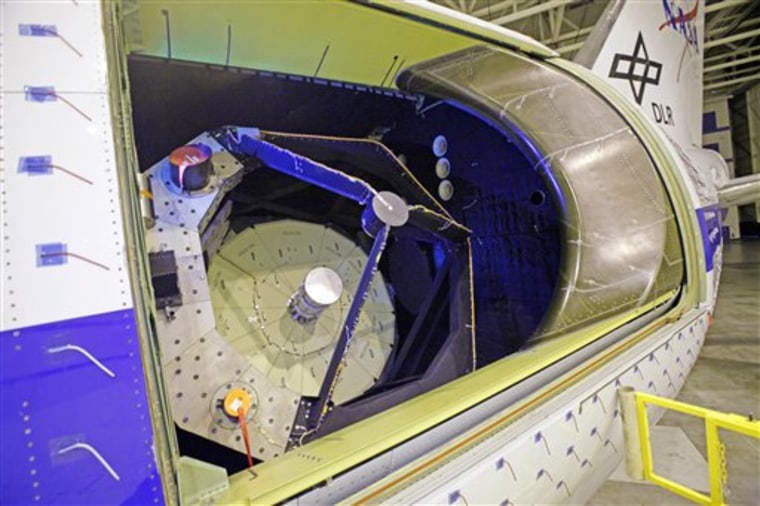A U.S.-German infrared observatory mounted in a jumbo jet flew its inaugural science flight Wednesday, a mission to better understand how stars form.
The highly modified Boeing 747SP jetliner returned to its base at Palmdale in the Mojave Desert after 10 hours of cruising at high altitude.
It was the first of three science flights planned before Christmas, and marks the start of a 20-year observing campaign.
The observatory, which is equipped with a 100-inch-diameter telescope, targeted the star-making factory Orion nebula and a young forming star cluster 3,000 light-years from Earth during the flight. A special camera developed by Cornell University recorded the images.
By flying at high altitudes — between 39,000 feet and 45,000 feet — the telescope peering from a cavernous hole in the side of the aircraft avoids most of the atmospheric water vapor that interferes with ground-based observatories.
The joint NASA and German Aerospace Center project is called the Stratospheric Observatory for Infrared Astronomy, or SOFIA for short. NASA's share to date is $810.3 million, the space agency said.
The amount of the German monetary contribution was not immediately available Wednesday.
